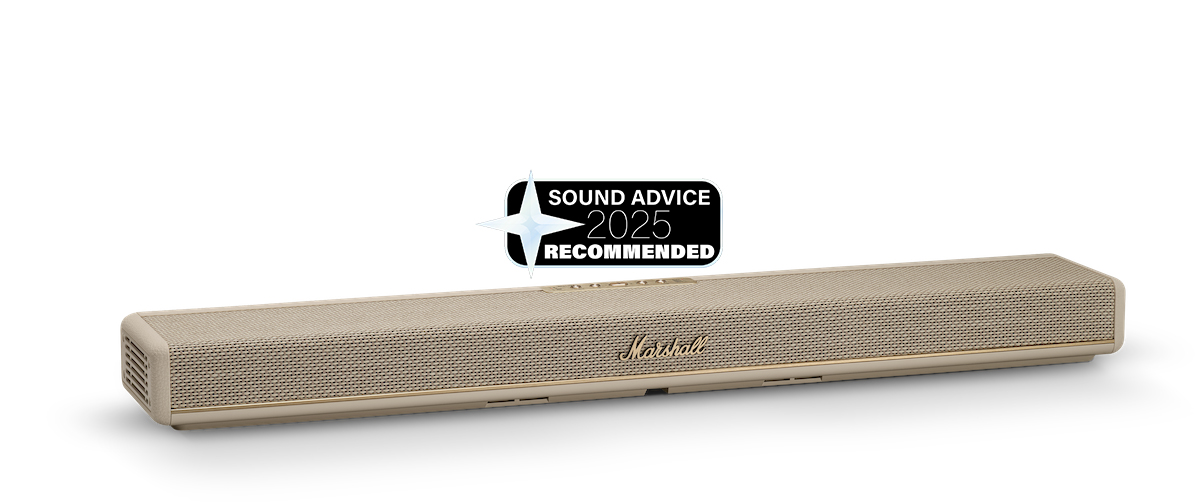Soundbars
A Soundbar is the easiest way to get better sound from your TV an add an essential element of home cinema without needing to take out a bank loan
ARC / eARC
The High-Definition Multimedia Interface (HDMI) connection handles audio and video signals. HDMI Audio Return Channel (ARC) flows data in both directions; letting can connect sources – such as a games console, set-top box, and Blu-Ray player – to your TV via the regular HDMI sockets using the TV's HDMI ARC to send audio to your soundbar. If your TV is on the wall and your soundbar's connectivity allows, route your sources through the soundbar, meaning just one HDMI cable running up the wall to the TV. HDMI eARC enables greater amounts of data to travel back and forth – think of HDMI as a pipe, and eARC increases the diameter of the tube. Of the two, only eARC can transport the latest, more data-hungry sound formats, including DTS:X and Dolby Atmos.
Voice control
Numerous soundbar models support Amazon Alexa and Google Assistant, letting you bark commands from the comfort of your sofa.
Bar the music
Most soundbars are unlikely to outperform even a modestly priced separates hi-fi system for music replay. But mid and higher-end soundbars narrow the performance gap. And using your soundbar for music means giving up less of your living room real estate to electronics and loudspeakers. There are many options, from simply plugging your device into a soundbar's aux-in to wireless connecting via Bluetooth and wi-fi. You can also expect support for music-enabling services, including Apple AirPlay, Chromecast, and Spotify Connect.
Why?
The rise of the soundbar is inextricably linked to the demise of cathode-ray tube (CRT) TVs. The late 90s saw the arrival of large flatscreen TVs, complete with their shallow cabinets, making their CRT elders chubby and passé. But the flatscreen's lack of physical volume, particularly its lack of depth, means less space for built-in loudspeakers. The result? Great looking TVs, below par sound, including an absence of bass reach. The solution? The soundbar.
Location
Before you buy, think about where you'll place your soundbar. It needs a stable location, ideally sitting at ear height when in your listening position. If you're putting it on a tabletop or shelf, aim to pull it forward to sit flush with the surface's front edge – this placement reduces the threat of sound quality-interfering reflections. Also, consider the soundbar's speaker layout, including upward and side-firing drivers – not ideal if you want to stick your soundbar in a recess, such as a TV cabinet where it'll be unable to project the audio properly.
Room correction
Several soundbars include room correction systems to adjust the sound to the acoustics of your room. The process is simple: press the button and keep quiet while the soundbar makes some thrillingly futuristic sound beeps and belches. You can help issues here by ensuring the soundbar sits at ear height in a relatively neutral sounding room. By neutral sounding, we mean not as lively as a greenhouse and not as dull as the inside of a bean bag.
Soundbase
In the main, the more space a speaker designer has to work with, the better sounding the result. A soundbase delivers more acreage, so more room for bigger, more capable speakers. But you must make space for the soundbase, essentially stepping back in time to almost the footprint of a CRT TV.
But it's fair to expect greater bass reach from a soundbase as there is more space for a built-in subwoofer. But don't expect pseudo surround or height channels, as soundbars typically miss out on upward-firing speakers, so struggle to bounce the sound around your room.
Upward firing speakers
Whatever full-sized surround sound packages do, the latest soundbars will undoubtedly give it a go. Higher-end soundbars use upward-firing speakers to reflect audio off the ceiling, recreating the effect of ceiling speakers or height channels. Try before you buy or, at least, envisage how this tech may function in your room.
Rear speakers
A traditional soundbar houses left, right, and centre (LCR) channels. Rear speakers, available in wired and wireless designs, and left and right back channels to the mix, upping that oh-so-important immersive experience. The question is, when is a soundbar not a soundbar but a home cinema system? Arguably, you're veering into a grey area once you add rear speakers and a subwoofer. Actual rear speakers, though, up against bounced surround effects are a surer bet and work well for smaller spaces lacking in bounceability.
Surround sound
Today's leading subwoofers promise to match almost every audio feature on offer from a typical AVR-driven 5.1 (and beyond) package. From Dolby Atmos-supporting upward-firing drivers to angled and side-firing 'beams', which bounce audio off your walls to behind your ears, you want it, the box will promise it. But there is always a compromise. Think carefully about how these features might, or might not, work in your room. In the correct environment, you can get close to the effect of a traditional system, but all it takes is an immovable alcove to lay siege to even the most capable soundbar's best efforts.
Subwoofer
An external subwoofer means the soundbar can concentrate on staying svelte. A wireless sub doesn't need a cable between itself and the soundbar, but it still needs plugging into the mains. Consider placing your sub, even a wireless model, in close (ish) proximity to the soundbar; otherwise, the two units may sound detached – the ideal here is one merged sound from the pair.




